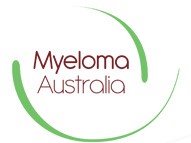Myeloma Australia’s Medical and Scientific Advisory Group (MSAG) presents the article of the week.
Lenalidomide, bortezomib, and dexamethasone (RVd) followed by autologous stem cell transplantation (ASCT) is standard frontline therapy for transplant-eligible patients with newly diagnosed multiple myeloma (NDMM). This study evaluated addition of daratumumab (D) to RVd in ASCTeligible NDMM patients. Patients (N=207) were randomized 1:1 to receive RVd ±D induction (4 cycles), ASCT, RVd ±D consolidation (2 cycles), and lenalidomide ±D maintenance (26 cycles). At the primary endpoint analysis, the stringent complete response (sCR) rate by the end of post-ASCT consolidation favored D-RVd over RVd (42.4% vs 32.0%; odds ratio, 1.57; 95% confidence interval [CI], 0.87-2.82; 1-sided P=0.068) and met the prespecified 1-sided alpha of 0.10. With longer follow-up (median, 22.1 months), responses continued to deepen; rates of sCR improved for D-RVd versus RVd (62.6% vs 45.4%; P=0.0177), as did rates of minimal residual disease negativity (10−5 threshold) in the intent-to-treat population (51.0% vs 20.4%; P<0.0001). Four (3.8%) and 7 (6.8%) patients in the D-RVd and RVd groups progressed, respectively, and 24-month progression-free survival rates were 95.8% (D-RVd) and 89.8% (RVd). Grade 3/4 hematologic adverse events were more common with D-RVd. More infections occurred with D-RVd, but rates of grade 3/4 infections were similar. Median CD34+ cell yield was 8.2×106/kg for D-RVd and 9.4×106/kg for RVd, although plerixafor use was more common in the D-RVd arm. There was no difference in median times to neutrophil or platelet engraftment. In summary, daratumumab with RVd induction and consolidation improved depth of response in patients with transplant-eligible NDMM, with no new safety concerns.

